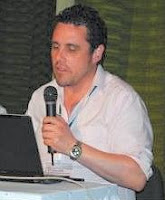A top-level domain is the last part of an Internet domain name. The original set of these TLDs, defined in October 1984, is still the most familiar — .com, .edu, .gov, .mil, and .org, to which .net was added in the first implementation of the domain name system. Management of TLDs is in the hands of the Internet Assigned Numbers Authority (IANA), which operates under contract to the Internet Corporation for Assigned Names and Numbers (ICANN).
Over the years, new TLDs — now called generic TLDs, to distinguish them from, say, country-code TLDs — have been added, and now .aero, .biz, .coop, .info, .museum, .name, and .pro are all operational, even if not widely used. Several additional new gTLDs have been approved in principle, although only .mobi, for the delivery of the Internet to mobile devices, seems to have aroused much interest.
Most important, in June 2008, ICANN approved the recommendation of a new gTLD program which would allow just about any organization to apply to reserve its own gTLD. Under this system, for example, Microsoft could apply for .msn, Google for .google, or New York City for .nyc. The implementation plan for the new system is expected to be published in 2009. The plan must then be approved by the ICANN Board before the system is implemented. ICANN is currently aiming to receive applications for domains starting in the second quarter of 2009.
This new plan is now seen as an opportunity for indigenous peoples to have their own gTLDs — .taino, for example, or .shipibo. But applying for a gTLD requires significant resources of time, money, and expertise. For that reason, an organization named Dot Indigi has been formed, with the aim of helping indigenous peoples be represented on the Internet in a space that is self-governing, representative, and restrictive of intellectual property abuses.
Here is how it would work. The Dot Indigi organization will apply to ICANN for the new gTLD .indigi — or another name if the community prefers — to represent all indigenous groups of the world. The .indigi domain would then offer indigenous organizations the opportunity to register their own second-level domains under the .indigi gTLD — for example, māori.indigi or diné.indigi. The organization would petition ICANN to approve the use of such characters as ā and é as part of indigenous names at the second and lower domain levels.
 |
| Karaitiana Taiuru |
Individual indigenous organizations could then govern their own domain name space and distribute or resell third-level domain names — for example, ocetiwakan.lakota.indigi. Indigenous peoples could structure their domain levels to accommodate their own culture; the Māori people could, for example, create the third-level domain .kura.māori.indigi under which each individual Māori school could have its own domain. Additional second-level domains would be made available to the public for the use of indigenous individuals or smaller indigenous groups that cannot justify the expense of setting up their own second-level domain.
Dot Indigi envisions that a percentage of annual profits would be given back to indigenous groups, to allow them to participate in additional information and communication technology projects that would empower their people and organizations.
Dot Indigi is currently headed by Māori Internet activist Karaitiana Taiuru. The organization partners with the International Indigenous Task Force and the New Zealand Maori Internet Society, with support from the International Indigenous Librarians Forum and the World Intellectual Property Office, and with technical advice from ideegeo Group LTD, a domain registration and management service for international web addresses.
Dot Indigi is certainly utilizing the resources of the Web to get its message out. In addition to their website, the organization currently has a Facebook group, a Google group, and a Bebo profile, and can be followed on Twitter.

- Previous Post: Psychoactive Plants Online
- Next Post: The Dimethyltryptamine Receptor
- More Articles Related to: Indigenous Culture


